Hackaday Berlin was Bonkers
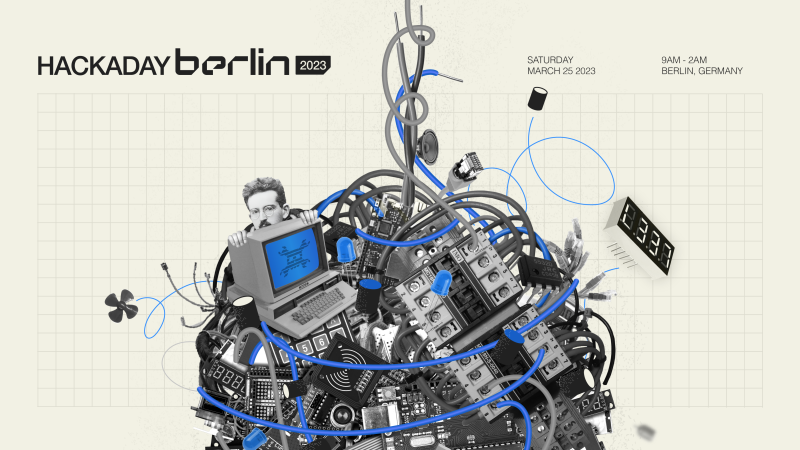
In celebration of the tenth running of the Hackaday Prize, we had a fantastic weekend event in Berlin. This was a great opportunity for all of the European Hackaday community to get together for a few days of great talks, fun show-and-tells, and above all good old fashioned sitting together and brainstorming. Of course there was the badge, and the location – a gigantic hackerspace in Berlin called MotionLab – even had a monstrous laser-eye octopus suspended from a gantry overhead. Everyone who came brought something to share or to show. You couldn’t ask for more.
Unfortunately, we weren’t able to record the talks, so we’ll run down the highlights for you here. [Jenny List] is writing up a bunch of the badge hacks as we speak, so we’ll skip that for now. For the full experience, you just had to be there, but we’ll share with you what pictures we got. Enjoy!
Talks
The morning kicked off with [Jiska Classen] taking us through her reverse engineering practice. She’s not shy to admit that it involves a lot of “staring at code” until it gives, but she also pointed out some helpers along the way. If you can get the SDK, they often leave the symbols in, which help with a lot of the staring. And [Jiska] gave a great introduction to dynamic reverse engineering practices – writing your own code hooks is a lot like printf() for someone else’s closed-source binary.
[James Bruton] took the stage next, telling us how he gets it all done on his prolific YouTube channel. A good percentage of this involves simply working full days or more, but he also has an agent who helps him with sponsorships, which make up most of his income. If you want to know how to make a career out of it, [James] says you have to do it well, invest in your studio and production, and keep producing quality content. No surprise there. The one tip that might surprise was that since retention matters to the YouTube algorithm, getting a single hit that goes viral might actually hurt rather than help.
Former Hackaday Prize winner [Ali Shtarbanov] talked in depth about his huge project, FlowIO, and open-source hardware and software platform for creating soft robotics. Since the hardware itself can cost a lot of money to manufacture, [Ali] mentioned a lending-library like approach to encourage people to work on their projects using his system, which we think is an interesting solution to the problem where you need the hardware first to write the software.
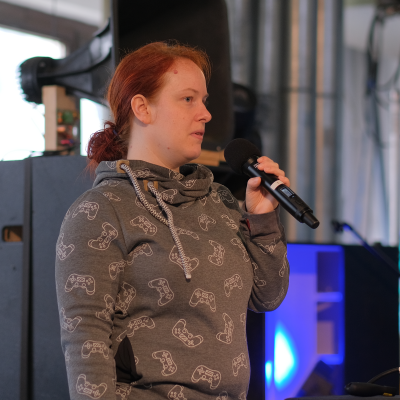

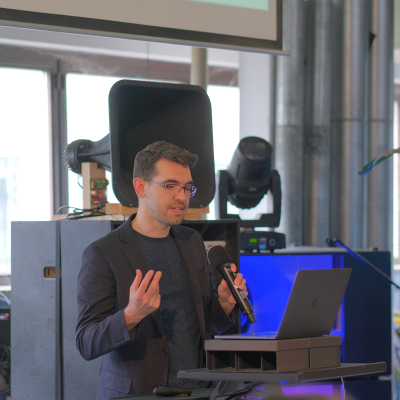
[Astrid Bin] gave a tremendously fun about the musical instruments of the Star Trek universe. There were a lot more of them than we thought, and they all tell something about the aliens that played them, but more to the point, she learned a lot about real (non-conventional) instrument design from studying them. Along the way, she made a harp-like instrument that played notes louder and louder as you gripped it harder and harder, eventually releasing in an explosion of sound. Our biggest take-home conclusion about designing electronic musical instruments – don’t focus about what you can do technically, but rather think about the music that the thing will let you create, because that’s what matters.
[Bleeptrack] gave us a look into her generative art practice. She’s made an infinite bug generator, never-repeating circuit board designs, and a perspective on why you don’t want to carve too much detail even if you’ve got a CNC router – it’s all the sanding. One of the main themes of the talk was walking the balance between letting everything become random and selecting enough parameters to control that you have interesting artistic control over the whole affair.
Finally [Trammell Hudson] told the tale of reverse engineering the cellphone app that controlled his IoT dishwasher in order to get it on his home automation network. Coming full circle, he actually included a picture of a slide from [Jiska]’s presentation in his, and shared her love for dynamic reverse engineering. He gave big props to the Frida reverse engineering toolkit for Android apps, and at the end of the day built a tool to let you control your own Home Connect appliances however you’d like.
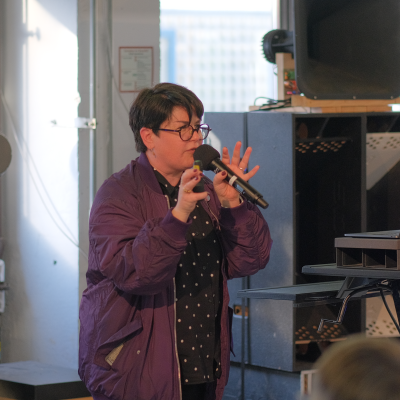
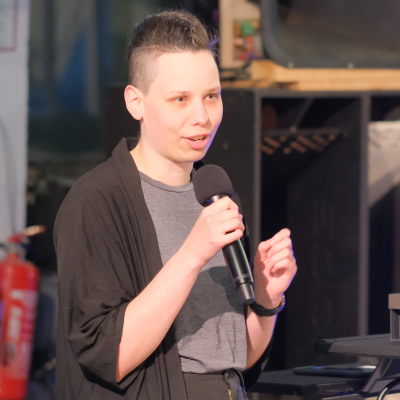
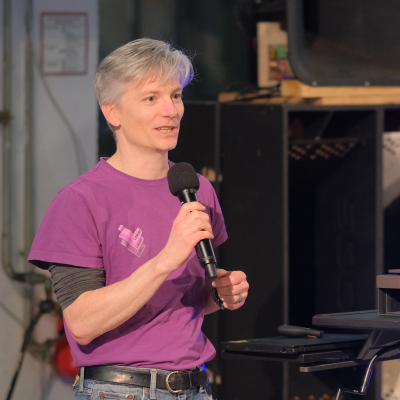
Socializing
Most of the fun of being at something like Hackaday Berlin is hanging out with more than 256 fellow nerds, and sharing your stories of success and failure. The Friday night, we started out at the BrewDog, where we overflowed our allotted table space and started taking up any seats nearby that the waitstaff could find us.
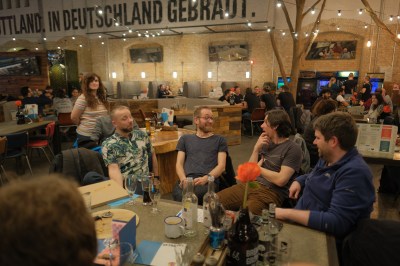
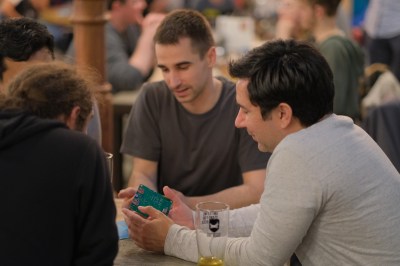

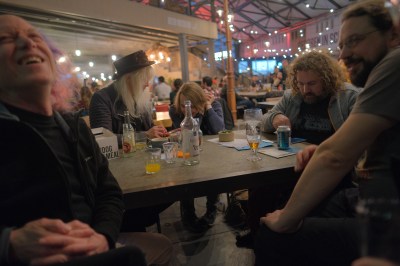
Saturday was truly taken up mostly with the talks, but also went on late into the night. While Hackaday.io’s own [Rich Hogben], played live modular techno until about 3:30 AM, some folks from MotionLab pulled out their turntables and kept things going until 5:30 AM.
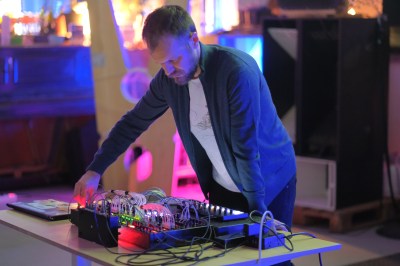
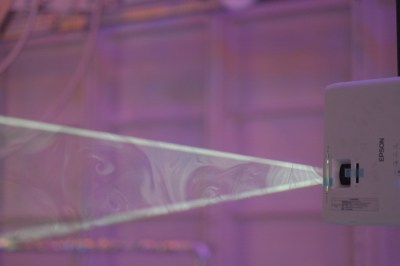


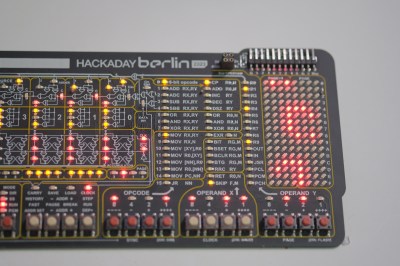
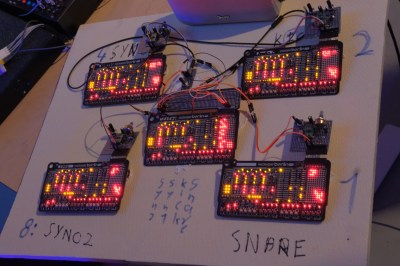


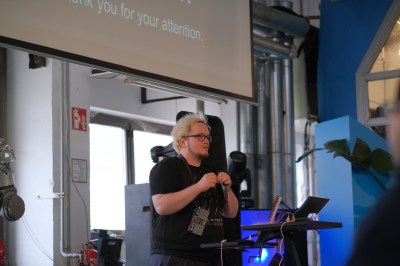
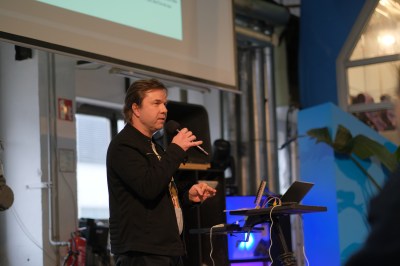
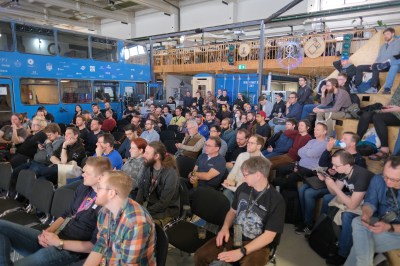
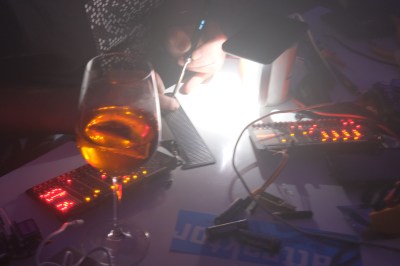
How people managed to roll out of bed and make the Bring-a-Hack Brunch at 11:00 on Sunday morning is a miracle, but almost everyone did! That’s dedication. And then the lightning talks on Sunday morning were nothing short of marvelous.
MotionLab
I had never been to MotionLab before, but it’s a fantastic warehouse space filled with all of the tools that a hacker could need and then some. From a laser cutter that you could lie down in, to soldering stations for a workshop, to a 3D printer that’s big enough to print a human-sized chair in one go, the equipment is there. But more so, the hacking spirit is alive.
It takes a certain square meterage to fit a bus in a space, but it takes a bunch of crazy hackers to turn it into a lounge, studio, and meeting room. It provides a nice quiet zone in the middle of the space and we’re more than a little jealous.
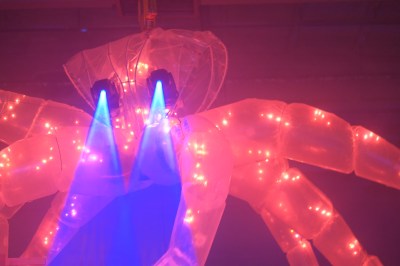

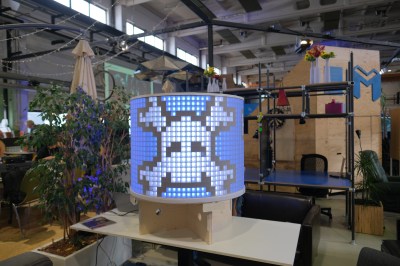
The giant inflatable octopus is made up of castaway industrial fans, found plastic sheeting, and bungee cords pulled by motors. Its eyes are DMX-controlled club lights, and the whole thing was suspended on the space’s overhead gantry. Needless to say, as it came at you, scanning, glowing, and moving overhead, it was a mix of menacing and awesome.
The Hackaday Prize
And last but not least, the secret surprise reveal that we maybe leaked out to the audience by accident – the Hackaday Prize turns ten this year. It’s our tenth time ’round, and we’re running a number of our favorite categories from the past, and one new one. For the full details, you really want to head over to the official Hackaday Prize landing page, or stay tuned for our introduction to the first challenge, Re-engineering Education, tomorrow.
We’re super excited to see what you bring to the Prize this time around, and it kicked off on Saturday, so get hacking!
Post a Comment